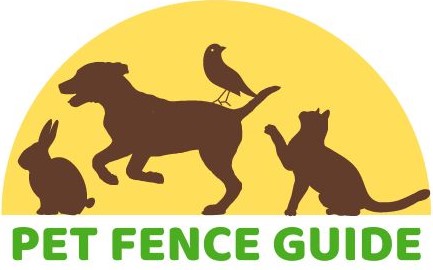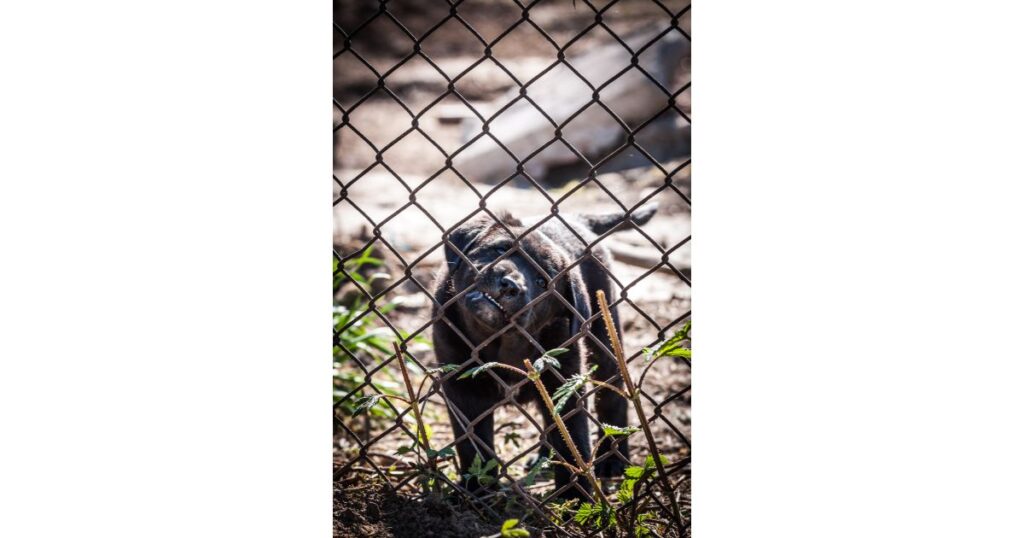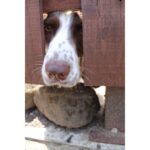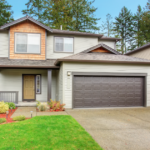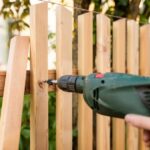How to install dog fence underground. In this simple and informative guide, we’ll walk you through the process of installing an underground dog fence in your yard. This technology is a game-changer for pet owners who want to keep their dogs safe and secure without the need for traditional visible fences. We’ll cover everything you need to know, from planning and materials to training your dog and system maintenance.
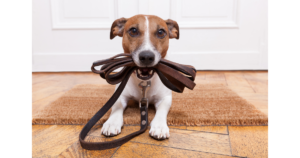
How to install dog fence underground. Planning Your Underground Dog Fence Installation
Table of Contents
ToggleBefore you start digging and installing, take a moment to plan your underground dog fence project. Begin by choosing the right location in your yard. It should be an area where your dog can run and play safely. Measure your yard to determine the scope of the project and select the appropriate size for your containment area. Finally, choose the right fence system based on your dog’s size and temperament.
1: Gathering the Necessary Tools and Materials
You’ll need some tools and materials to get the job done. Here’s a list of what you’ll need:
- Boundary wire
- Transmitter and receiver collar
- Splice kits
- Flags for training
- Wire strippers
- Shovel
- Garden hose
- Zip ties
- Protective conduit
2:Factors to Consider While Preparing for Installation of an Underground Dog Fence
How to install dog fence underground, when you decide to install an underground dog fence to provide your furry friend with a safe and secure space to roam, careful preparation is essential. Preparing for the installation phase can significantly impact the success and safety of the project. Here are several crucial factors to consider during the preparation phase:
Safety Precautions:
- Personal Safety: Always prioritize your safety and that of anyone involved in the installation. Wear appropriate safety gear, including gloves and eye protection, to prevent accidents and injuries while handling tools and materials.
- Pet Safety: Ensure your dog is safe and secure during the installation process. Keep them indoors or in a separate enclosed area to prevent them from interfering with the work or getting injured.
Utility Line Location:
- Contact Utility Companies: Before digging any trenches, contact your local utility companies to mark the location of underground utility lines. This step is crucial to prevent accidental damage to gas, water, electric, or telecommunications lines, which can be dangerous and costly to repair.
Legal Requirements and Permits:
- Local Regulations: Research your local regulations regarding underground dog fence installations. Some areas may require permits or have specific guidelines that must be followed. Non-compliance with local laws can lead to fines or other legal issues.
- Permit Acquisition: If permits are necessary, ensure you apply for and obtain them before starting the installation. This will help you avoid unnecessary delays and complications.
Yard Preparation:
- Clear the Area: Before digging the boundary trench, clear the installation area of debris, rocks, and obstacles. This ensures a smooth installation process and prevents damage to the boundary wire.
- Plant Considerations: Identify and remove any plants, shrubs, or tree roots that may interfere with the path of the boundary wire. Trim overhanging branches to avoid potential damage to the system.
Weather Conditions:
- Ideal Weather: Consider the weather conditions when planning the installation. Ideally, you should choose a day with good weather, as rain or extreme cold can make the installation process more challenging.
- Seasonal Considerations: In regions with harsh winters, consider installing the underground dog fence during milder seasons to avoid complications related to frozen ground.
Proper Tools and Materials:
- Tool Availability: Ensure you have all the necessary tools and materials on hand before beginning the installation. Common tools include shovels, wire strippers, splice kits, zip ties, and a garden hose. Having everything ready will streamline the process.
Layout Planning:
- Boundary Layout: Carefully plan the layout of the underground fence boundary to ensure it covers the desired area while avoiding obstacles. Take accurate measurements of your yard to determine the wire length needed.
Training Strategy:
- Training Preparation: Consider how you will train your dog to understand and respect the boundaries set by the underground fence. Prepare training treats and have a clear strategy in mind for teaching your dog how the system works.
3: How to install dog fence underground.Installing the Underground Dog Fence
Laying the Boundary Wire:
The first step in installing an underground dog fence is to lay the boundary wire. This wire defines the limits of your dog’s containment area. Here’s how to do it:
- Plan the Route: Start by planning the route for the boundary wire. This route should encircle the area where you want your dog to stay. You can also create exclusion zones to keep your dog away from specific areas like flower beds or swimming pools.
- Dig a Trench: Using a shovel, dig a trench along the planned route. The depth of the trench should be around 1 to 3 inches. The depth may vary depending on the manufacturer’s guidelines, so refer to your system’s manual for precise measurements.
- Lay the Wire: Place the boundary wire inside the trench, leaving some slack at the ends for connection. Make sure the wire lies flat and is not twisted or kinked.
- Close the Trench: Once the wire is in place, carefully cover the trench with soil. Ensure the wire is buried at the correct depth to protect it from damage and prevent your dog from digging it up.
Installing the Transmitter and Receiver Collar:
The transmitter and receiver collar are essential components of your underground dog fence system. Follow these steps to install them:
- Select a Suitable Location: Find a suitable indoor location for the transmitter. It should be a dry area with access to a power outlet. The transmitter is the control center of your system.
- Connect the Transmitter: Connect the transmitter to the power source and follow the manufacturer’s instructions to set it up. The transmitter emits a signal through the boundary wire to communicate with the receiver collar worn by your dog.
- Receiver Collar Setup: Adjust the settings on the receiver collar according to your dog’s size and temperament. Fit the collar snugly but not too tight around your dog’s neck. Ensure the contact points make good skin contact.
- Test the System: Before your dog wears the collar, it’s crucial to test the system. Walk the collar around the boundary, starting from inside the safe zone, to ensure it emits a warning signal when it approaches the boundary wire. Consult your system’s manual for specific testing procedures.
Testing the System:
After installing the underground dog fence components, it’s vital to conduct thorough testing:
- Boundary Flags: Many systems come with boundary flags that serve as visual cues for your dog during training. Place these flags along the boundary line to help your dog recognize the limits.
- Training Mode: Most systems have a training mode that allows your dog to become familiar with the warning signals without receiving corrections. Use this mode during the initial training phase.
- Training Your Dog: Begin training your dog to understand the warning signal. Walk them on a leash towards the boundary, and as they approach it, they will hear a warning beep from the collar. If your system includes a vibration or static correction, introduce these gradually following the manufacturer’s guidelines. Reward your dog with treats and praise when they retreat from the boundary in response to the warning signal.
- Repeat Training Sessions: Consistency is key to successful training. Repeat training sessions daily until your dog learns the boundaries and responds appropriately to the warning signals.
Troubleshooting Common Installation Issues:
Even with careful installation, you may encounter some issues. Here are some common problems and troubleshooting tips:
- Signal Interruptions: If you notice gaps in the signal or your dog is not receiving warnings, check for damaged wires, loose connections, or interference from metal objects. Repair or reposition the wires as needed.
- Inconsistent Collar Activation: If the collar does not consistently emit warning signals or corrections, ensure the collar’s contact points are making good skin contact. Clean them regularly to prevent interference.
- Battery Replacement: Regularly check and replace the collar batteries as needed to ensure your dog’s safety and the system’s reliability.
4: Training Your Dog:
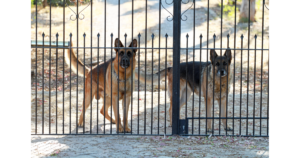
Introduction to Training:
Start the training in a calm and positive manner. Remember that this is about teaching your dog, not punishing them. Use treats, praise, and patience to reinforce desired behaviors.
Positive Reinforcement Techniques:
- Boundary Recognition: Walk your dog on a leash towards the boundary, allowing them to approach it. When the receiver collar emits a warning signal, stop and gently redirect your dog away from the boundary. Reward them with treats and praise for moving away from the boundary zone.
- Repeat and Practice: Repeat this process several times during the initial training sessions. Gradually increase the time your dog spends near the boundary, always rewarding them for respecting it.
- Correction Mode: If your system includes correction (static stimulation or vibration), introduce it according to the manufacturer’s guidelines. Ensure that the correction level is set to a humane and appropriate level for your dog’s size and temperament. Corrections should be used sparingly and as a last resort, and always accompanied by positive reinforcement.
Setting Boundaries:
- Establishing Safe Zones: During training, designate a safe zone within the containment area where your dog can play freely without receiving warnings or corrections. This safe zone provides your dog with a positive experience associated with the containment area.
- Boundary Flags: Leave the boundary flags in place during training. These visual markers help your dog recognize the boundary lines and serve as a visual aid during training sessions.
Gradual Independence:
- Leash Gradually Loosened: As your dog becomes more accustomed to the boundary and the warning signals, gradually increase their freedom by loosening the leash. Allow them to explore within the boundary while you supervise closely.
- Supervision: Always supervise your dog during the training phase. This ensures that you can step in if needed and provide immediate positive reinforcement for correct behavior.
Consistency and Patience:
- Consistency: Consistency is key to successful training. Maintain the same rules and boundaries every day. Use the same commands and reinforce positive behavior consistently.
- Patience: Every dog learns at their own pace. Be patient and understanding, and avoid scolding your dog for mistakes. Instead, redirect them and reward them when they respond correctly.
Gradual Removal of Flags:
- Flag Removal: Once your dog consistently respects the boundaries and responds appropriately to the warning signals, you can gradually remove the boundary flags. This step signifies that your dog has learned the boundaries and no longer needs visual cues.
Ongoing Reinforcement:
- Regular Training Sessions: Even after your dog is fully trained, continue occasional training sessions to reinforce the boundaries and commands. This ongoing reinforcement helps ensure your dog remembers the rules.
5: Maintenance and Upkeep
Ensuring the proper maintenance and upkeep of your underground dog fence is essential to keep it functioning effectively and to provide your furry friend with a safe and secure environment. Here’s a closer look at the maintenance tasks you should perform:
Regular System Checks:
Conduct routine checks of the entire system to identify any issues. This includes inspecting the boundary wire, transmitter, receiver collar, and any associated components. Look for signs of wear and tear, exposed wires, or damage caused by weather or landscaping activities.
Battery Replacement:
Check the batteries in your dog’s receiver collar regularly, as they are crucial for the system to work correctly. Many systems provide low-battery indicators on the collar or transmitter. Replace batteries as needed to ensure your dog’s safety.
Wire Maintenance:
- Inspect Wire Connections: Periodically inspect the connections of the boundary wire, especially if you’ve done any yard work or landscaping. Make sure all connections are secure and free from damage.
- Repair Damaged Wires: If you discover any damaged sections of the boundary wire, repair them promptly. Use splice kits or connectors designed for underground dog fences. Properly sealing the connections will protect them from moisture and environmental factors.
Transmitter Maintenance:
- Check Transmitter Status: Regularly check the transmitter to ensure it’s powered on and functioning correctly. Pay attention to any warning lights or indicators that may signal a problem.
- Clean the Transmitter: Dust and debris can accumulate on the transmitter’s surface, potentially affecting its performance. Clean the transmitter gently with a dry, soft cloth to keep it in optimal condition.
Collar Maintenance:
- Clean the Collar: Over time, dirt, moisture, and debris can accumulate on your dog’s receiver collar. Clean it regularly with a damp cloth to prevent these elements from interfering with the collar’s operation.
- Inspect Collar Contacts: Check the contact points on the collar for dirt or corrosion. Clean them as needed to ensure they make good skin contact for proper functioning.
Seasonal Considerations:
- Winterizing the System: In areas with harsh winters, take extra precautions to protect the system. Ensure that the boundary wire is buried deep enough to avoid damage from freezing ground or snowplows. Consider using protective conduit in vulnerable areas.
Professional Maintenance:
- Scheduled Checkups: Some pet containment companies offer professional maintenance and inspection services. Consider scheduling periodic checkups by a trained technician to ensure the system is working optimally.
Ongoing Training and Supervision:
- Training Reinforcement: Continue to reinforce your dog’s understanding of the system’s boundaries through occasional training sessions, even after they are fully trained.
Documentation:
- Keep Records: Maintain a record of your system’s installation date, battery replacement dates, and any repairs or maintenance performed. This documentation can be valuable for troubleshooting and warranty purposes.
By following these maintenance and upkeep guidelines, you can ensure that your underground dog fence remains reliable and safe for your pet. Regular checks and timely repairs will extend the life of the system while providing peace of mind that your furry companion is protected in your yard.
7: Additional Tips and Considerations
- Dealing with challenging landscapes: Adjust your installation approach for difficult terrain.
- Multi-dog households: Each dog will need a compatible collar.
- Winterizing the system: Protect your fence from winter weather to ensure it works year-round.
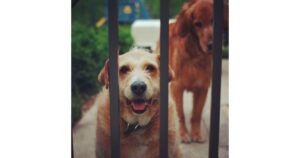
Conclusion
How to install dog fence underground. In conclusion, installing an underground dog fence is a significant step toward providing your beloved pet with both safety and freedom. By carefully planning your installation, prioritizing safety, and adhering to local regulations, you lay the foundation for a successful project. As you progress through the installation process, from laying the boundary wire to training your dog, remember that patience and positive reinforcement are your allies.
Maintaining your system with routine checks, battery replacements, and repairs is essential to ensure its longevity and reliability. Ultimately, the underground dog fence offers a secure way for your furry friend to enjoy your yard while giving you peace of mind knowing they’re safe.
